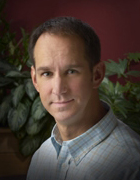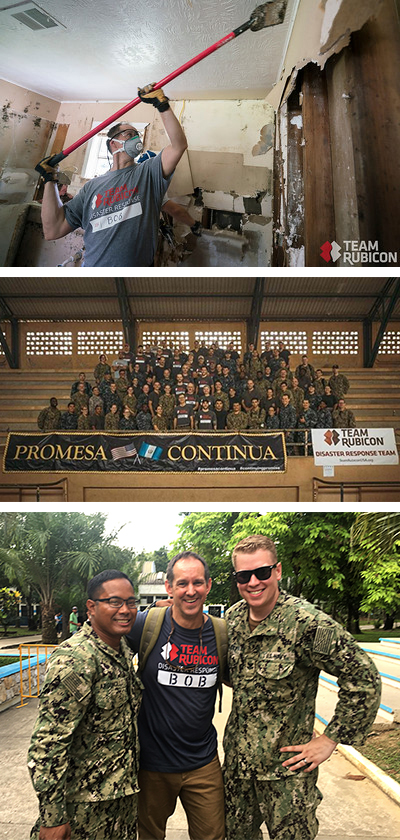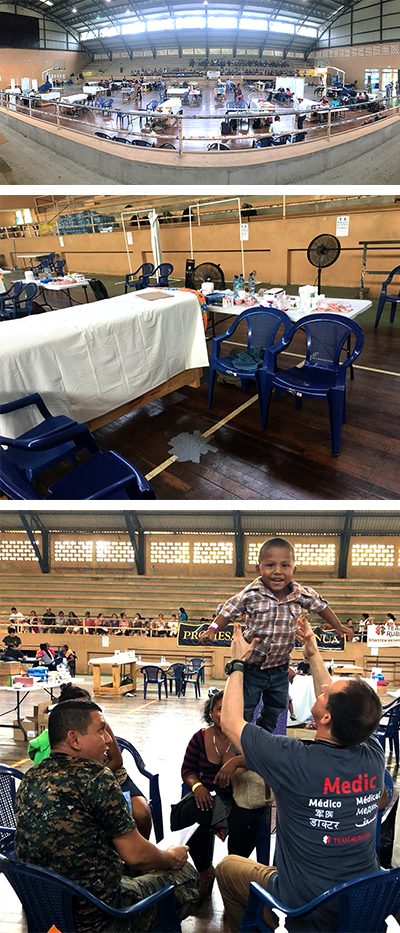
TEAM RUBICON PHOTOS COURTESY OF JEREMY HINEN & TEAM RUBICON

Team Rubicon Outreach in Guatemala
Continuing Promise 2018
By BOB TOTH, PA-C
Recently, I had the opportunity to participate in a Team Rubicon medical mission, providing care in Guatemala supporting Operation Continuing Promise with the United States Navy. I joined Team Rubicon in 2014, wanting to aid in their relief missions helping both our national and global communities. As a service organization, Team Rubicon’s primary mission is to provide relief to those affected by natural disasters, whether domestic or international. By pairing the skills of military veterans with first responders, medical professionals, and technology solutions, Team Rubicon aims to provide the greatest service and impact possible.

Since the beginning when I joined Team Rubicon, the University of Utah Department of Orthopaedics has been extremely supportive in my time and efforts with Team Rubicon. During the last 4 years I have been on 4 missions; 3 domestic and 1 international. I’ve helped out with flooding and fires in Utah, cleaned up from the aftermath of Hurricane Harvey in Houston as a team leader, and most recently served in Guatemala as a physician assistant.
In April, I went with Team Rubicon to Puerto Barrios, Guatemala. Puerto Barrios is located on the eastern coast of Guatemala along the Caribbean Sea, eight hours from the capital Guatemala City. This medical mission with Team Rubicon supported the United States Navy with Operation Continuing Promise. Continuing Promise was started in 2008, with a mission to build relationships and provide medical care to partner nations in Latin America. As the scope of Team Rubicon has expanded, the Navy has tasked Team Rubicon to help with their Operation Continuing Promise efforts.
During the beginning of this mission I served as a physician assistant involved with primary care. Once the Navy discovered I was in orthopaedics, I started serving as an orthopaedic medical provider. I saw about 34 patients a day with conditions ranging from osteosarcomas to Tetralogy of Fallot. During the nine days of providing medical services, the mission was able to take care of over 8,000 patients. Far exceeding the Navy’s projected goal of 5,000.

The clinic was located in a gymnasium, creating an environment much different than what’s found in most hospitals/clinics. There were 20 tables setup to designate space for general exam rooms, and 3 tables designating private exam rooms. Most patients had fairly common primary care conditions, but there were also those with serious or advanced medical conditions. After each day, I would get back to the hotel and reflect on the patients I was most worried about. Patients like a 25-year-old male, whose primary complaint was fatigue for 20 years. He had a low oxygen saturation of 85% (normal is 95-99%), clubbing of his digits, and shallow breathing with a very loud heart murmur. Fortunately, we were able to get him to a cardiothoracic surgeon at the Ministry of Health in Guatemala City. There was also a 9-year-old boy, who developed a bony growth and loss of elbow flexion for 8 years. Luckily radiographs revealed an osteochondroma, which led to a referral for surgical excision. This allowed him to gain an increased range of motion in his elbow; something he’d been lacking for the majority of his life.
By the end of the mission, our group of 25 Team Rubicon members ended up helping 220 members of the Navy in completing 8,109 patient encounters, surpassing the Navy’s goal of 5,000. In addition to medical care, we also had the opportunity to help the community by providing continuing education for local health care providers.
Overall, this was a great experience and one I would gladly do again. I value the ability to work as a medical provider at the University Orthopaedic Center, and the opportunities I have to help my community and the world. I owe many thanks to the University of Utah Department of Orthopaedics for continually supporting me in pursuing my passion of helping those in need around the world and close to home.